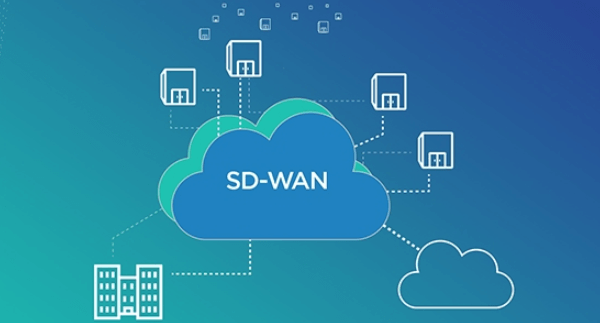How SD-WAN Technology Can Improve Network Performance and Security

SD-WAN technology centrally drives network traffic based on business requirements and enables unified control and management from one interface. IT teams can improve application performance and user experience while reducing costs and security risks.
Using link-bonding, SD-WAN technology can combine multiple WAN connections, such as MPLS and direct internet broadband, into a single logical connection to improve availability. This is especially helpful for remote branches that backhaul to a data center.
Real-time Path Monitoring
Unlike basic SD-WAN, which only steers traffic using pre-defined rules, a business-driven solution continuously adapts to network conditions and performs continuous real-time path monitoring. It detects congestion, brownouts, and other impairments and delivers optimal application performance with dynamic best-path routing. This ensures that critical applications like point of sale (POS) terminals, video cameras, and digital signage can always connect to the internet. It also enables retail customers to access their accounts through a secure mobile connection without compromising the security of their data.
Business-driven SD-WAN also provides centralized, automated orchestration to simplify network deployment and make changes quickly, with minimal human intervention. This can reduce operational costs and improve IT productivity by eliminating the need to reconfigure individual network devices manually. It can also help eliminate human errors that compromise network performance or security.
Businesses seek faster and more reliable connectivity to cloud applications as they embrace digital transformation initiatives. As traditional MPLS networks become overburdened, they are being replaced by SD-WAN solutions that provide bandwidth-intensive and lag-sensitive applications with high-quality connectivity across the WAN. This is possible by prioritizing network traffic, delivering application-aware routing, and allowing for secure local internet breakout of IaaS and SaaS applications at branch offices. This approach can increase the speed of cloud connections by up to 30x and provide a more consistent user experience across all locations.
Load Balancing
SD-WAN uses software to manage multiple network connections, including MPLS, broadband internet, 4G/5G, and public transport. It automatically routes application traffic over the best path based on current network conditions, optimizing bandwidth and reducing costs without compromising performance or security.
The traditional WAN architecture uses multiple routers to connect remote sites to applications in the data center. The legacy routers rely on the command line interface (CLI) to define where and how application traffic egresses the WAN, which requires extensive manual programming. This is time-consuming and prone to errors, resulting in costly downtime and poor application performance.
A business-driven SD-WAN can eliminate these problems through centralized configuration and automation. It enables secure local internet breakout for cloud applications and ensures high-performance connectivity to remote and cloud locations using a single WAN link, reducing cost. It also prioritizes traffic based on criticality, enabling IT to deliver a consistent user experience across the enterprise.
In addition, a business-driven SD-WAN solution can centrally program and deploy new links to branch offices in minutes, increasing operational efficiency and avoiding costly downtime. It can also use lower-cost network connections (broadband internet or 4G/5G) for low-priority traffic, saving expensive MPLS circuits for high-priority applications. Moreover, an intelligent SD-WAN can automatically prioritize applications based on policy, ensuring that the most important apps always get the highest bandwidth.
Optimal Routing
Optimal routing uses a sophisticated view of the network’s path to direct data packets. It works like GPS navigation software and helps drivers avoid traffic delays, accidents, and inefficient routes. SD-WAN technology offers the same advantages for business users.
With the right SD-WAN solution, you can securely connect users to applications with any broadband or 4G connection. This can dramatically reduce costs compared to traditional MPLS circuits. Gartner estimates that an organization can cut its WAN expenses by up to 50% with an SD-WAN solution.
Another key benefit of an SD-WAN solution is centralized management and automation. This allows the network to operate consistently across the different branches and sites. It also simplifies deployment and operational models. This is especially important because SD-WAN solutions allow a mix of transport services, including MPLS, broadband internet, and even LTE connectivity, to be used as the network’s underlying infrastructure.
With SD-WAN, you can get more value from your network by reducing costs and improving performance. For instance, by using multiple connections and dynamically modifying them based on real-time network conditions, you can avoid backhaul penalties and improve bandwidth efficiency. This can lead to significant application performance improvements, improved customer satisfaction, and more revenue. Moreover, the system can enable you to automatically provision and change premium network services such as WAN optimization, application security, and firewalls.
Policy-Based Routing
SD-WAN solutions use multiple network connections to intelligently route traffic, including MPLS, broadband Internet, and cellular (4G and 5G). This helps you optimize bandwidth by leveraging existing links instead of backhauling to central locations. It also improves security by ensuring traffic is not sent over a single link that could be vulnerable to attack.
To deliver high application performance, an SD-WAN solution analyzes all available paths to the destination and selects the best one based on business policy. This approach helps reduce application latency, a major contributor to poor user experiences, particularly for applications requiring high data transfer levels.
For example, an SD-WAN can identify the bandwidth requirements of high-bandwidth, latency-sensitive applications like team collaboration tools and video conferencing and ensure these apps receive priority access to bandwidth over all available networks. In turn, this enables better productivity while helping to minimize bandwidth costs.




